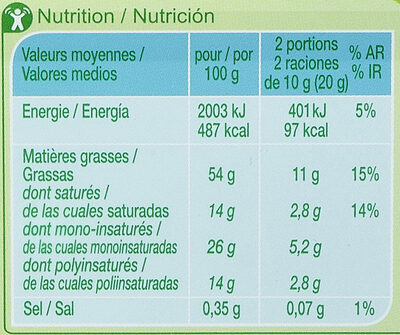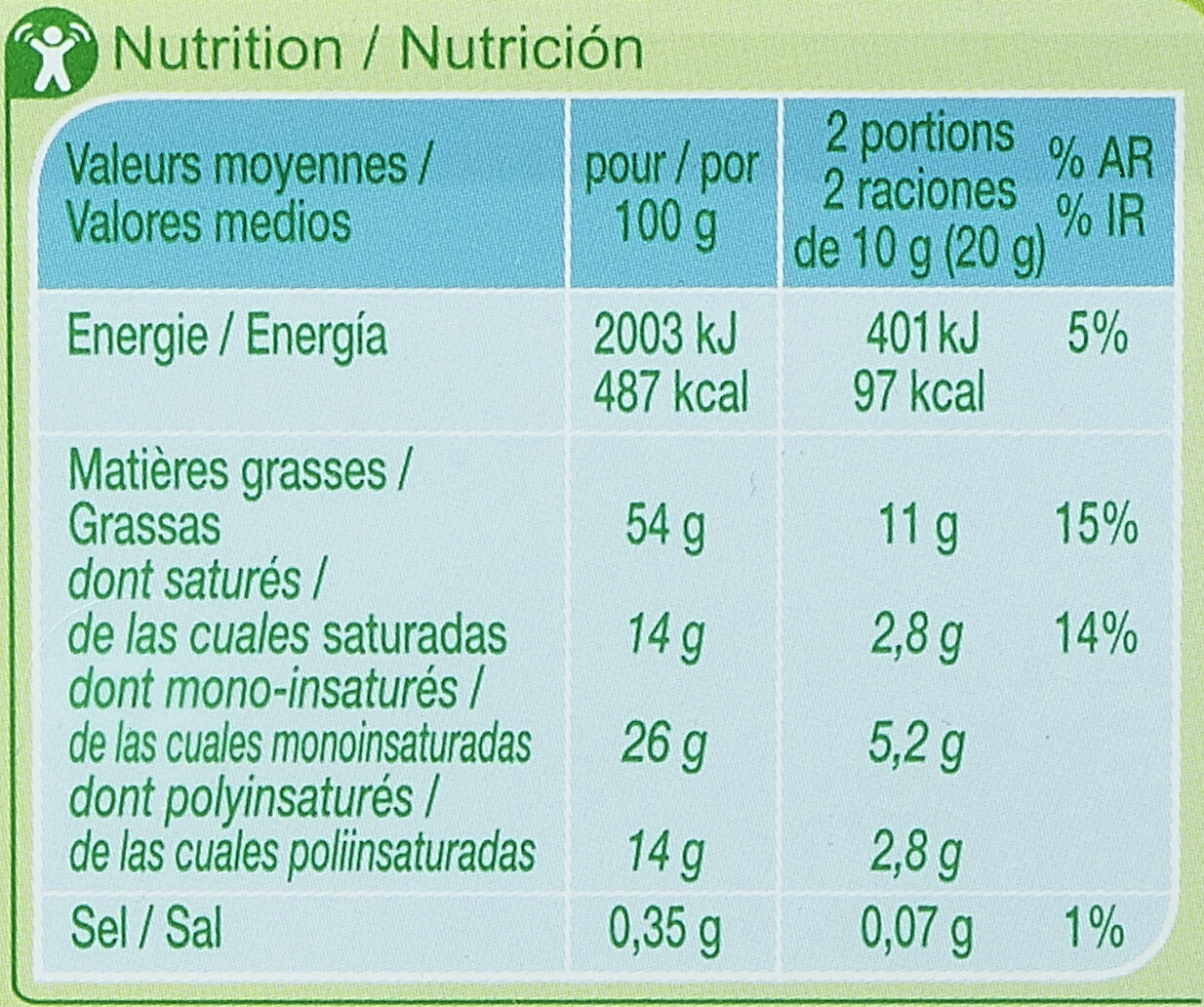Omega 3 - Matière Grasse à Tartiner - Carrefour - 500 g
This product page is not complete. You can help to complete it by editing it and adding more data from the photos we have, or by taking more photos using the app for Android or iPhone/iPad. Thank you!
×
Some of the data for this product has been provided directly by the manufacturer Carrefour.
Código de barras: 3560070246151 (EAN / EAN-13)
Common name: Margarina tres cuartos con 60% de materia grasa, alto contenido de ácidos grasos omega-3 y alto contenido de vitaminas A, D y E.
Cantidade: 500 g
Empaquetado: en:Plastic, en:Metal, en:Fresh, en:Seal, en:Tray
Marcas: Carrefour
Categorías: en:Plant-based foods and beverages, en:Plant-based foods, en:Fats, en:Spreads, en:Plant-based spreads, en:Salted spreads, en:Spreadable fats, en:Vegetable fats, en:Margarines, en:Light margarines, en:Margarines high in omega 3
Etiquetas, certificacións, premios:
en:Sustainable, Omega-3, en:Sustainable Palm Oil, en:Green Dot, High in Omega 3, Rich in vitamin A, Triman, fr:Engagés, fr:Entrepreneurs

Producer: Fabriqué en Espagne par Doccas Food S.L., RGSEAA: 16.004659/V pour INTERDIS.
Traceability code: EMB B:00419
Tendas: Carrefour, carrefour.fr
Matching with your preferences
Other information
Other information: 500 g e %IR Alto contenido de vitaminas A, D, E
Preparation: La matière grasse à tartiner Carrefour à 50% de matière grasse est idéale à tartiner dès la sortie du réfrigérateur, ainsi que pour les cuissons douces ou à couvercle fermé. Déposée après cuisson, elle accompagnera également viandes, poissons et légumes vapeur.
Aviso: Ne pas frire. Ne pas congeler.
Conservation conditions: A consommer de préférence avant le/ N° de lot : voir sur le couvercle. A conserver entre 0ºC et +6ºC, bien refermer l'emballage après utilisation.
Customer service: Interdis - TSA 91431 - 91343 MASSY Cedex - France
Report a problem
Data sources
Product added on by openfoodfacts-contributors
Last edit of product page on by tasja.
Páxina do produto tamén editada por beniben, carrefour, driveoff, ecoscore-impact-estimator, fpdsurveys, inf, jeremy64, kiliweb, musarana, org-carrefour, packbot, quechoisir, quentinbrd, scanbot, sebleouf, segundo, yuka.WDRKUlBhNDZqL1E0dFBNN29qbllwOU56M0xDTlpFYW5EUEl6SVE9PQ.













